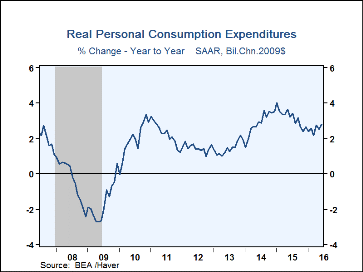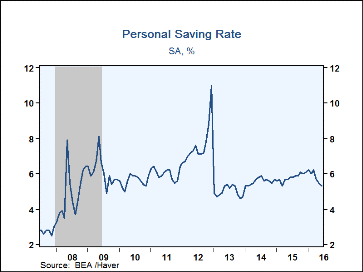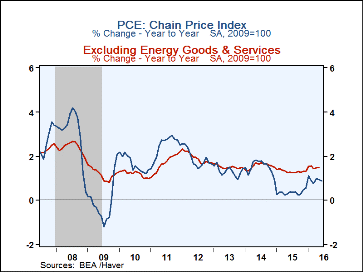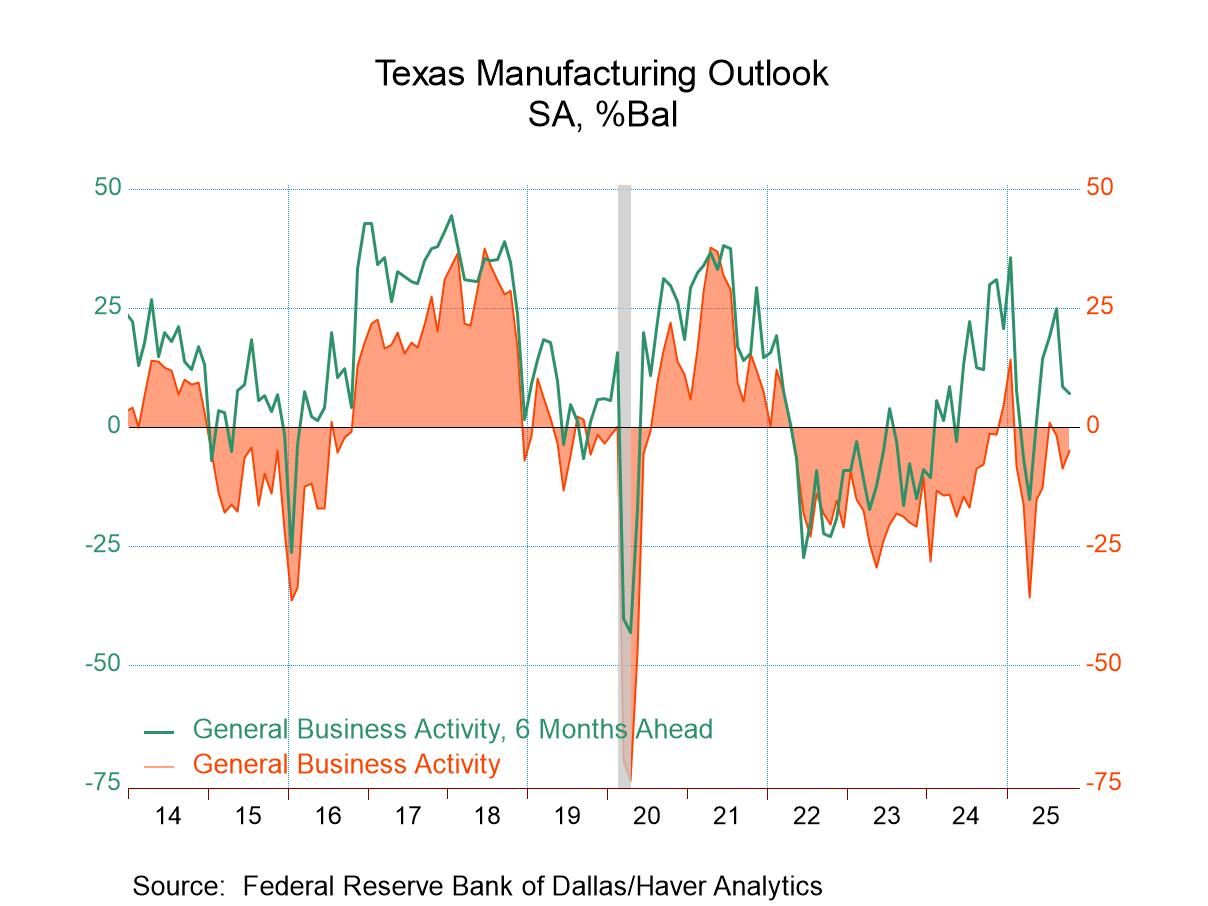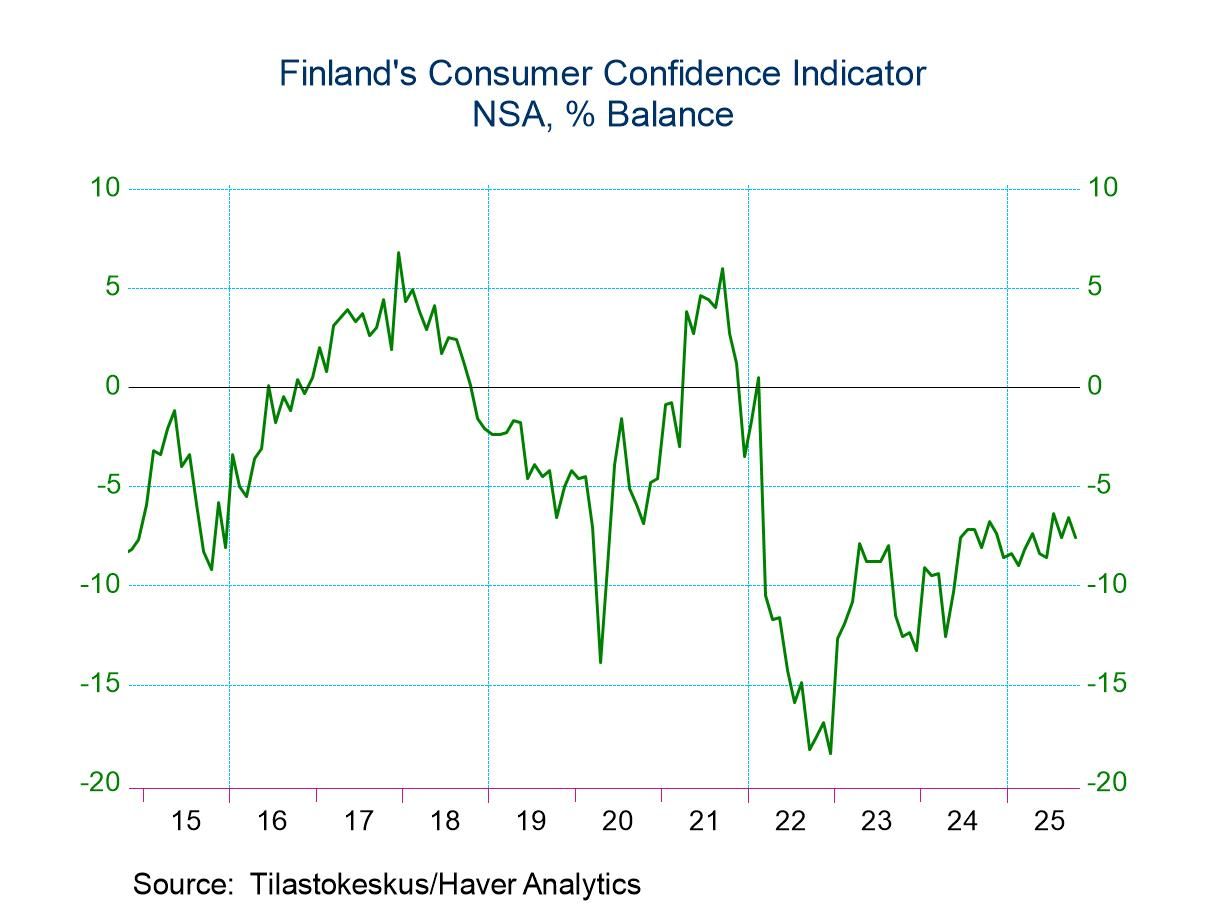 Global| Aug 02 2016
Global| Aug 02 2016U.S. Personal Spending Continues to Outpace Income
by:Tom Moeller
|in:Economy in Brief
Summary
Personal consumption expenditures increased 0.4% (3.7% y/y) during June, the same as in May. The figures reflect Friday's revisions to the National Income & Product Accounts. A 0.3% June increase had been expected in the Action [...]
Personal consumption expenditures increased 0.4% (3.7% y/y) during June, the same as in May. The figures reflect Friday's revisions to the National Income & Product Accounts. A 0.3% June increase had been expected in the Action Economics Forecast Survey. So far this year, spending has risen at a 4.3% annual rate compared to a 3.7% rise during all of last year. Adjusted for price inflation, spending rose 0.3% (2.8% y/y) last month. Current dollar purchases of nondurable goods increased 0.7% (1.4% y/y) following a 0.4% rise. Durable goods spending eased 0.3% (+2.3% y/y) after a 0.4% decline. Services spending gained 0.5% (4.7% y/y) as it did in May.
Personal income improved 0.2%, the same as in the prior month. Year-to-year growth decelerated, however, to 2.7% versus 5.2% during all of 2014. A 0.3% June increase had been expected. Wages & salaries rose 0.3% (3.2% y/y) after a 0.2% gain. Proprietors' income strengthened 0.6% (2.9% y/y) after declining slightly. Rental income grew 0.4% following a 0.2% rise, though monthly gains of 1.0% from January to March lifted the y/y increase to 6.5%. Receipts on assets fell 0.5% (-1.9% y/y) after a 0.1% rise while transfer receipts held steady (3.4% y/y) following a 0.2% increase. Disposable personal income gained 0.2% (3.1% y/y), the same as in May. Adjusted for inflation, take-home pay rose 0.1% (2.2% y/y), following no change.
The personal savings rate fell to 5.3%, down from 6.1% averaged in Q1'16 and in Q4'15. Personal saving declined 7.3% y/y.
The PCE Chain Price Index improved 0.1% (0.9% y/y) following a 0.2% rise. The nondurable goods price index firmed 0.3% (-1.6% y/y) after a 0.1% uptick. The services price index nudged 0.1% higher (2.2% y/y) after a 0.3% rise, but the durable goods price index fell 0.7% (-2.2% y/y), the fourth decline in six months.
The personal income & consumption figures are available in Haver's USECON database with detail in the USNA database. The Action Economics figure is in the AS1REPNA database.
Economic Gains Enough to Further Tighten Labor Market from the Federal Reserve Bank of Dallas is available here.
| Personal Income & Outlays (%) | Jun | May | Apr | Jun Y/Y | 2015 | 2014 | 2013 |
|---|---|---|---|---|---|---|---|
| Personal Consumption Expenditures | 0.4 | 0.4 | 1.0 | 3.7 | 3.5 | 4.4 | 2.8 |
| Personal Income | 0.2 | 0.2 | 0.4 | 2.7 | 4.4 | 5.2 | 1.1 |
| Wages & Salaries | 0.3 | 0.2 | 0.5 | 3.2 | 5.1 | 5.1 | 2.7 |
| Disposable Personal Income | 0.2 | 0.2 | 0.4 | 3.1 | 3.8 | 5.1 | -0.1 |
| Personal Saving Rate | 5.3 | 5.5 | 5.7 | 5.8 (Jun '15) |
5.8 | 5.6 | 5.0 |
| PCE Chain Price Index | 0.1 | 0.2 | 0.3 | 0.9 | 0.3 | 1.5 | 1.3 |
| Less Food & Energy | 0.1 | 0.2 | 0.2 | 1.6 | 1.4 | 1.6 | 1.5 |
| Real Personal Consumption Expenditures | 0.3 | 0.2 | 0.7 | 2.8 | 3.2 | 2.9 | 1.5 |
| Real Disposable Income | 0.1 | 0.0 | 0.1 | 2.2 | 3.5 | 3.5 | -1.4 |
Tom Moeller
AuthorMore in Author Profile »Prior to joining Haver Analytics in 2000, Mr. Moeller worked as the Economist at Chancellor Capital Management from 1985 to 1999. There, he developed comprehensive economic forecasts and interpreted economic data for equity and fixed income portfolio managers. Also at Chancellor, Mr. Moeller worked as an equity analyst and was responsible for researching and rating companies in the economically sensitive automobile and housing industries for investment in Chancellor’s equity portfolio. Prior to joining Chancellor, Mr. Moeller was an Economist at Citibank from 1979 to 1984. He also analyzed pricing behavior in the metals industry for the Council on Wage and Price Stability in Washington, D.C. In 1999, Mr. Moeller received the award for most accurate forecast from the Forecasters' Club of New York. From 1990 to 1992 he was President of the New York Association for Business Economists. Mr. Moeller earned an M.B.A. in Finance from Fordham University, where he graduated in 1987. He holds a Bachelor of Arts in Economics from George Washington University.


